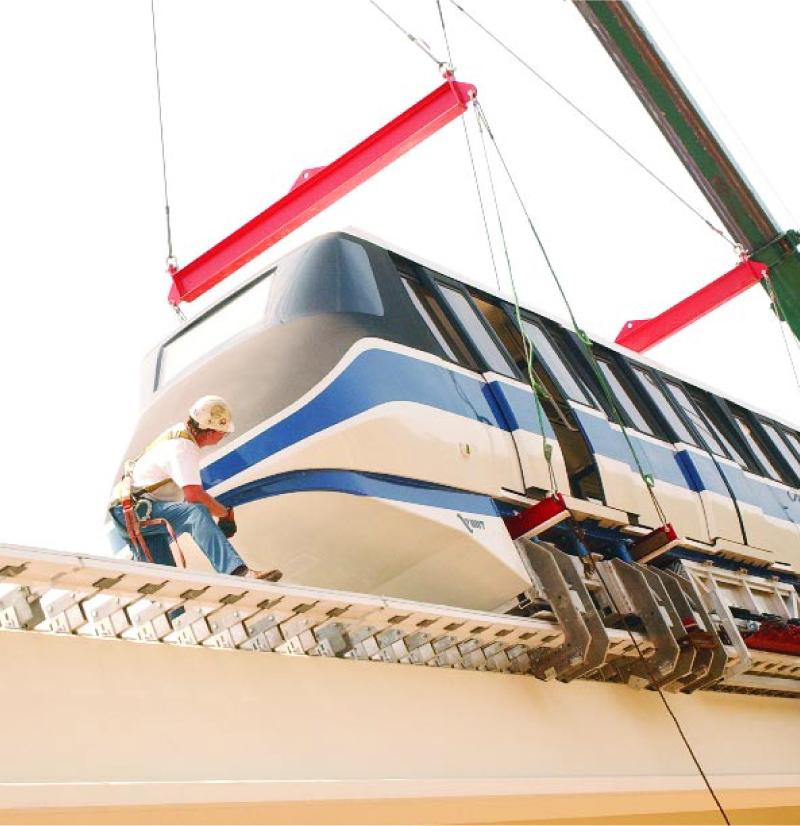Maglev Train Up and Running
DOI: 10.1063/1.1522211
Science fiction becomes reality this month as the first daily service of a passenger-carrying magnetic levitation transportation system becomes operational at Old Dominion University in Norfolk, Virginia. In Maglev trains, opposing magnetic fields generated by the train and track repel each other, keeping the train floating a few centimeters in the air and enabling it to reach speeds up to 476 km per hour, significantly faster than conventional trains. The technology has been around for awhile, but apart from several prototypes in Europe and Japan, Maglev trains have never left the drawing board due to their high construction costs compared to other forms of transportation.
The $14 million Old Dominion system won’t reach peak Maglev speeds. The 12-ton train will float along at 64 kph down a 1-km long elevated metal track, and will stop every few minutes at the university’s dorms, parking garage, and student union. The engineering department will conduct research to see how efficient the system is and to test out new technologies on the track in conjunction with the company that built the train, American Maglev Technology, based in Edgewater, Florida, and Dominion Virginia Power, which subsidized the installation costs.
More than $1.5 billion is spent each year in the US on low speed (slower than 80 kph) transit systems. Tony Morris, president of American Maglev Technology, says that Maglev trains, and his company’s in particular, can grab 30% of this market because the operating costs of the system are not steep. For example, the electric bill for the Old Dominion track is projected to be $2 800 per month—less than the cost of diesel fuel used by the existing campus shuttle system.
The US project will not be alone for long. The first high-speed commercial Maglev train is scheduled to start up early next year in Shanghai, China. That $1.37 billion system will connect the Shanghai airport with the city’s financial district 30 km away. Similar trains are being considered for a 1300-km track between Shanghai and Beijing, and several projects are in the works in the US, including a 40-km link between Baltimore, Maryland, and Washington, DC.

The first Maglev train, based on a decommissioned light rail car, is installed onto the track at Old Dominion University.
CHUCK THOMAS, OLD DOMINION UNIVERSITY

More about the Authors
Paul Guinnessy. pguinnes@aip.org

